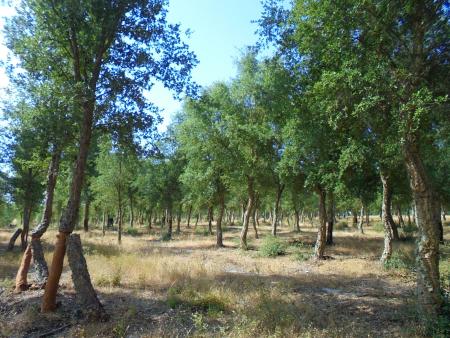
Objective:
In recent decades, new cork oak plantation areas have been established in Portugal, not only in the traditional areas of distribution of the species but also in the northern parts. Historical records show that the species was formerly present here, and climatic thresholds suggest a possible occurrence. Cork oak site productivity, assessed through site index, was modelled in relation to soil and climate variables. The models were developed to estimate and map the site index value along the cork oak potential distribution area in Portugal.
Context:
As per the Portuguese National Forest Inventory, 719,9 mil ha is occupied by cork oak forests/agroforests (ICNF 2019). However, historical records show this distribution is smaller than the country's potencial.
Site productivity estimation is important for the establishment of forest management plans, definition of forest policy measures and the development of growth models. Therefore, different site productivity evaluation methods may be used, such as site index. It refers to the dominant height of a stand at a certian reference age, which for cork oak is 80 years of age.
Contacts:
Joana Amaral Paulo, joanaap@isa.ulisboa.pt
Further information:
Paulo, J. A., Faias, S., Gomes, A. A., Palma, J., Tomé, J., Tomé, M. 2015. Predicting site index from climate and soil variables for cork oak (Quercus suber L.) stands in Portugal. New Forests 46 (2): 293-307. http://dx.doi.org/10.1007/s11056-014-9462-4
ICNF. 2019. Inventário Florestal Nacional Portugal Continental IFN6, 2015. Relatório final. ICNF, Lisboa. http://www2.icnf.pt/portal/florestas/ifn/ifn6
SUBER 5.0 model: http://www.isa.ulisboa.pt/cef/forchange/fctools/pt/PlataformasIMfLOR_/Povoamento/SUBER